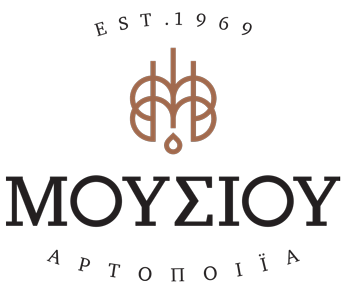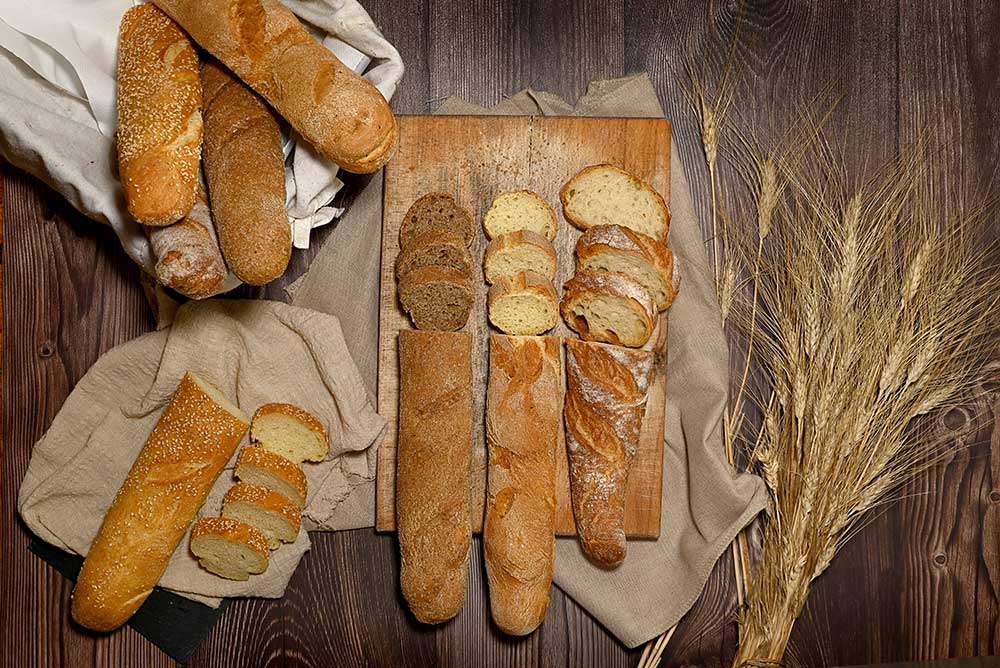I think we can all agree that we like bread. Despite the various diets that prevent us from doing this from time to time, we refuse to leave it. Its global consumption is growing by about 1.1% every year. Specifically in Greece, the average person eats about 68 kg of bread per year and we are not even in the top 3 bread consumption in Europe.
So, we eat bread with the above. But do we really know the differences between the types of bread we eat each time? You might say it does not matter. In reality, however, knowing the specifics of each bread, will help you and choose the best for each way of consumption, but also for your own nutritional needs.
White
Or luxury. Clearly the most famous bread and the one we meet most often. Its main ingredient is processed wheat flour, which is why it is rich in calcium, but low in fiber. It always includes yeast, water and salt, but depending on the recipe it can also have oil, milk, sugar or even butter.
You can consume it as you wish, since it is delicious enough to fit everything. Classically we eat it with our main meals. But its best “performance” is when it becomes part of a mass, such as minced meat and souffle.
Wholegrain
Clearly one of the most nutritious choices. The reason is that the flour here has not been processed, ie the sprout has not been removed. As a result, it is rich in fiber, B vitamins, vitamin E, iron, minerals and folic acid.
You can consume it in all possible ways. Our favorite, however, is the basis for various spreads.
Rustic
In Greece, its popularity may exceed that of white bread. We usually find it in the form of loaves and it is very compact. In its most traditional recipe, it is made from soft flour, yellow hard flour, coarse semolina, yeast and water.
The way of consumption that we suggest to you is its classic. That is, eat it with your meal. You can take whatever is left over to ferment minced meat.
Multi-seed
His name betrays a lot. It is made from several different combined flours, such as wheat, barley, rye, oats and corn. This fact, of course, makes it rich in fiber, vitamins and amino acids. At the same time, it gives it a “rich” taste, which fills our hearts with warmth.
If you want a healthy breakfast, it’s the best choice. Toast it and spread whatever you want on it.
Baguette
It is not terribly different from the classic white bread. It consists of processed wheat flour, yeast, water, salt and a little corn oil. The main difference is its thin and long shape, which the French created to bake bread faster.
In France, baguettes are often eaten plain, along with some cheese. In Greece we make it daddy sandwiches.
Ciabatta
This Italian bread owes its name, which means slipper, to its shape. It belongs to the category of unleavened breads and its basic recipe includes wheat flour, salt, yeast and water. Some people also add milk.
Its crust is thin and crunchy, while its core is quite elastic and has large holes. It is considered one of the ideal breads for sandwiches and paninis. For Italians, it is also their favorite side dish for soups.
Rye
It is obtained by mixing rye flour and wheat flour. Its main feature is its fairly solid core. It is considered a very good choice for diabetics, as it contains less starch than other breads. It is rich in fiber, phosphorus, manganese and protein, while it has twice the amount of magnesium from white bread.
The best way to enjoy rye bread is in a sandwich. Most will tell you to follow the 100% healthy path and combine it with low fat cheese and vegetables. We will tell you to try it with pastrami or salted beef.
Yeast
Its English name, which you may have heard, is sourdough. In Greece we usually hear it with the name of a region, such as Gianniotiko. Its crust is quite compact, while its core has a more chewy feeling. The difference with other breads is that the dough has been fermented with sourdough of natural origin. That’s why it lasts longer, but is also a common choice for people with gluten intolerance.
The taste is relatively sour, so we do not recommend it for breakfast, especially for a sweet breakfast. It can simply serve as an accompaniment to one of your meals. Or you can use it instead of toast bread and then thank us for the idea.
Brioche
This French bread, in our personal opinion is one of the most addictive you will find out there. Its composition consists of flour, eggs, milk, yeast, butter, sugar and salt. You understand that it is not the healthiest, but it is terribly soft, fluffy and delicious.
We eat them plain. However, at its best, brioche becomes a staple in burgers and sandwiches. And because it can easily “pass” for dessert, try it in egg slices.
Focaccia
Another Italian bread that we love. Its dough is flat – it is spread and baked in a pan – and it is quite reminiscent of pizza dough. It consists of hard flour, olive oil, water, yeast and salt. The olive oil enters the dough, but also from above just before baking, so that the crust becomes a little crispier.
You can eat it in many different ways. Most people put extra ingredients on top and eat it on their own. The most common combination is the one with olives, cherry tomatoes and onions. However, it is wonderful and pure, when you dip it in your soup.
What is Dinkel bread and flour?
In recent years, Dinkel flour and bread have become very popular, which many have included in their diet.
Dinkel flour is a cereal of the same family as wheat, but it is a different kind. It is one of the oldest grains mentioned in the Bible and dates back to about 10,000 years. It was first cultivated in Persia and was a staple food for humans and animals, and soon flooded Europe and the rest of the world.
Today it is widely used in Germany under the name Dinkel and in Italy under the name Farro and is used in many recipes. In Greece we met it relatively recently and associated it mainly with weight loss, something that in many cases can be very misleading.
Advantages
-Unlike common wheat that peels easily, Dinkel grains need special processing to peel. Their impermeable outer skin allows the development of a thinner, delicate, water-soluble core in which vitamins and trace elements are developed and maintained, making this wheat efficient in cultivation but also very nutritious for health.
-Dinkel flour has a high solubility in water and so nutrients are easily absorbed by the human body. This property gives the pastries made from this flour the feeling of a full, compact structure.
The hard shell of the grain protects the wheat from the pollutants and insects of the environment, while it functions as a protective barrier that contributes to the retention of nutrients in its core.
Dinkel flour contains a group of carbohydrates, myco-polysaccharides, which are an important anticoagulant and strengthen the body’s immune system.
-It is a direct source of fiber and contains significant amounts of water-soluble vitamins.
-The protein content is from 10 to 25% higher than other varieties of wheat. This content varies depending on the crop, environmental conditions and the harvest season.
-Contains significant percentages of iron, magnesium, zinc as well as beneficial fatty acids.
Calories
It can be nutritious, but Dinkel bread has a lot of calories and should be consumed with caution by dieters. A slice of bread made from Dinkel flour has about 80-90 calories. In fact, it has the same calories as bread made from wheat or rye flour or barley or corn or other cereals.
Gluten
Dinkel flour has high levels of gluten, like other types of wheat, so it should be avoided by those who suffer from celiac disease, ie they are intolerant to gluten.




